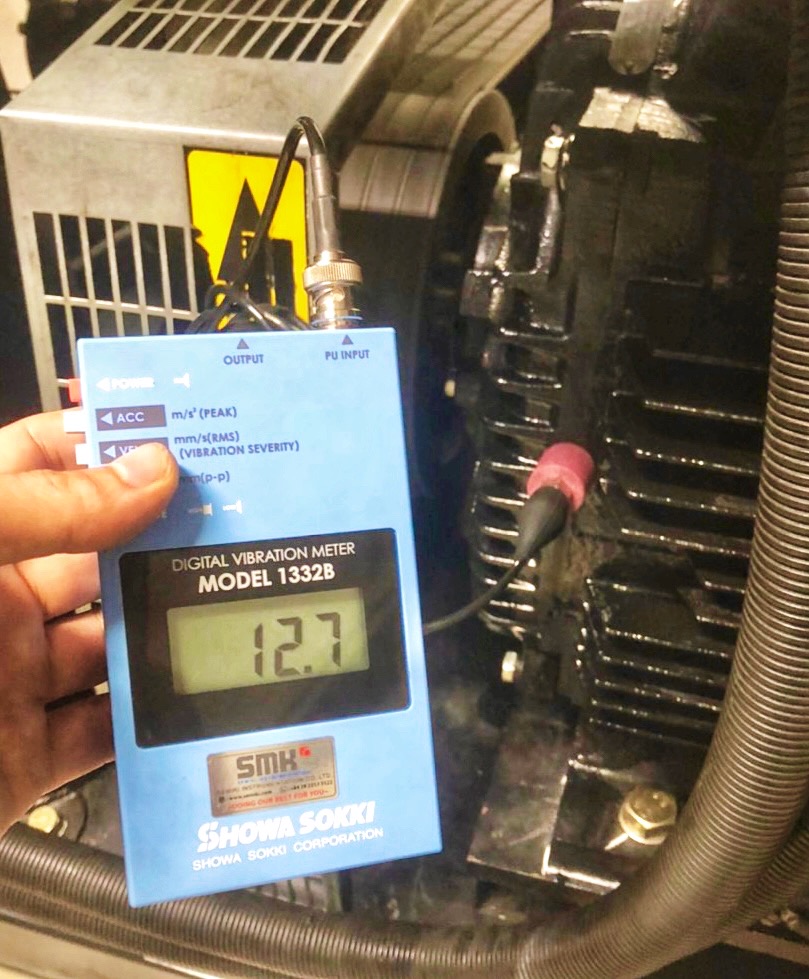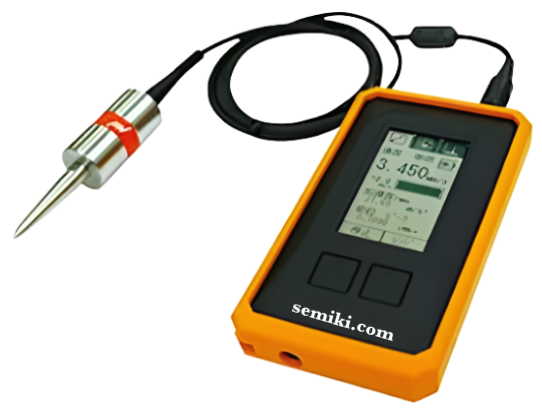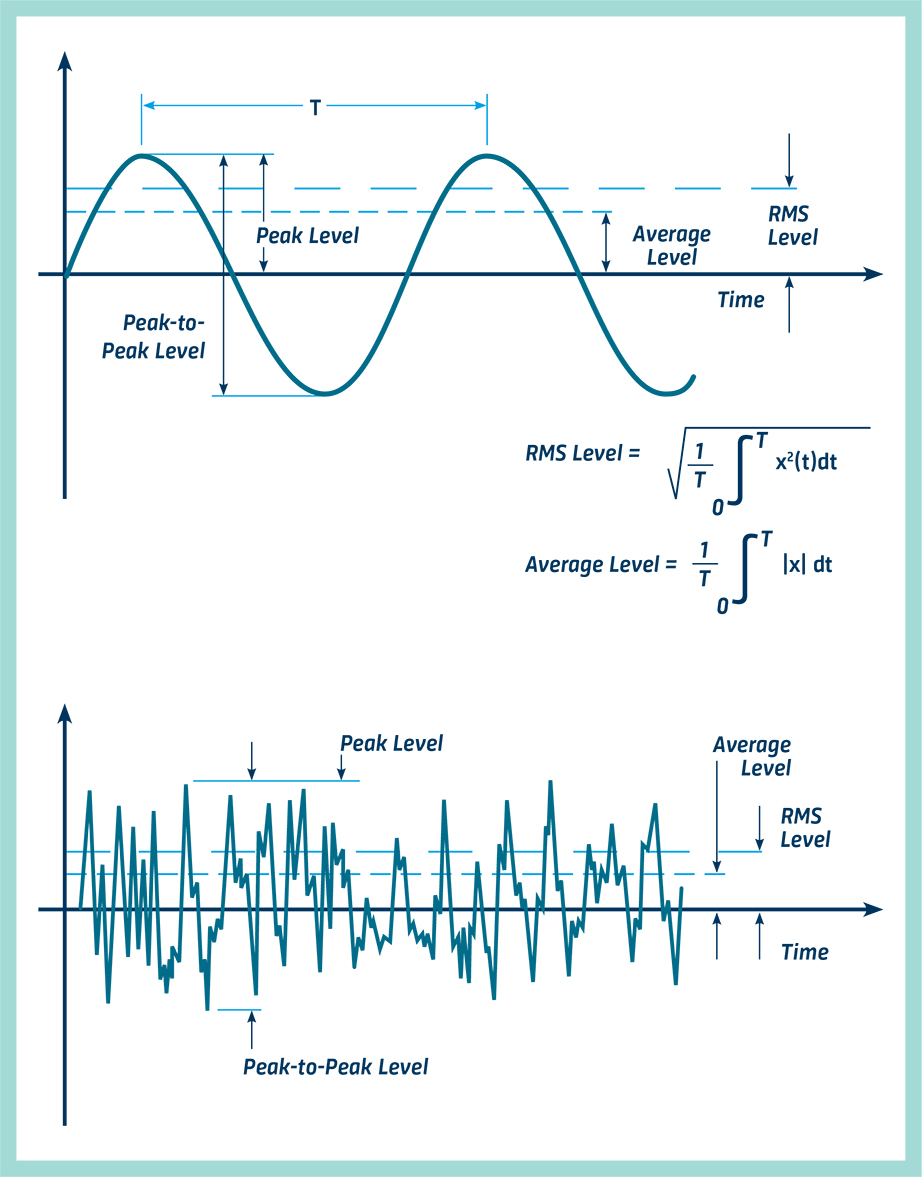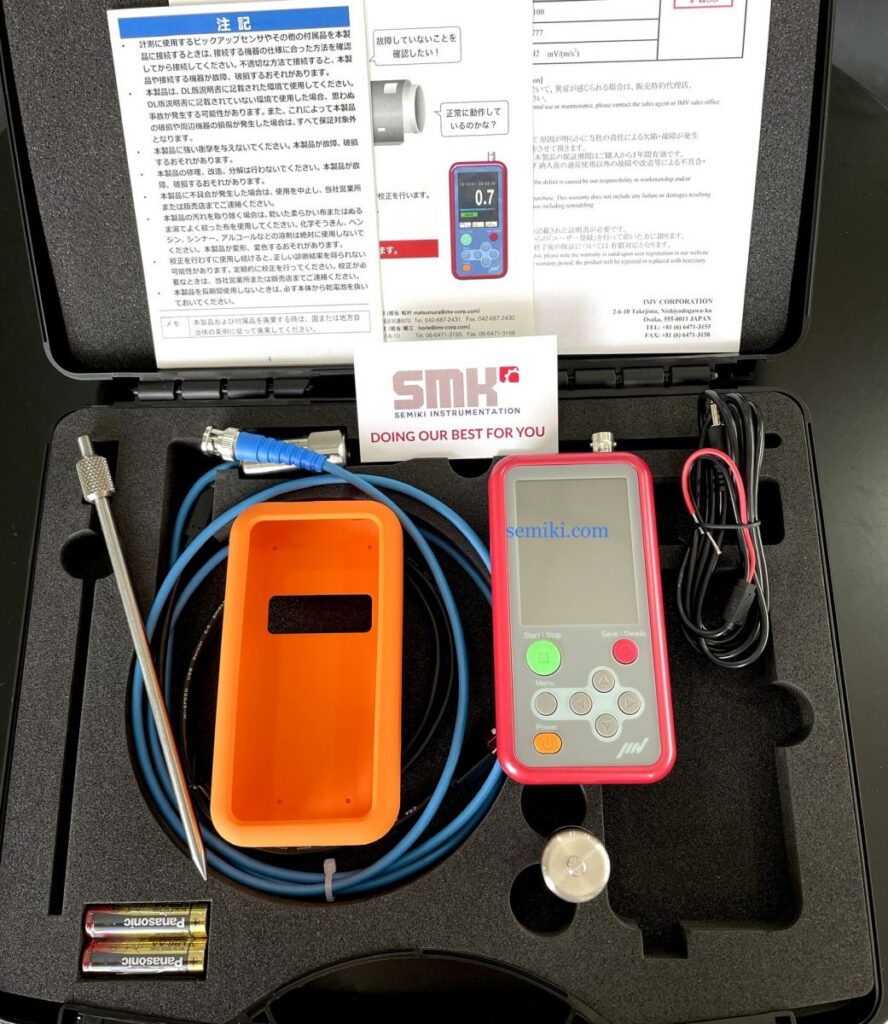
How is vibration measured?
Vibration meters typically measure and display reports as Displacement , Speed and Acceleration .

Engine vibration meter Showa-Sokki 1332B (Acceleration measurement is 0.01m/s2~199.9m/s2, speed measurement is 0.01mm/s~199.9mm/s and displacement measurement is 0.001~19.99mm(PP))

Vibration amplitude, which describes the severity of vibration, can be quantified in many ways. On the diagram, the relationship between peak to peak, peak level, average level and RMS level of a sine wave is shown.
The peak-to-peak value is valuable in that it represents the maximum deflection of the wave, a useful quantity where, for example, the vibration displacement of a machine part is critical for maximum stress or mechanical gap.
Peak values are especially valuable for indicating the magnitude of short-term shocks, etc. However, as can be seen from the figure, peak values only indicate the maximum level that has occurred. without taking into account the time history of the wave.
On the other hand, the corrected mean takes into account the time history of the wave but is considered of little practical interest because it has no direct relationship with any useful physical quantity.
The RMS value is the most suitable measure of amplitude because it both takes into account the time history of the wave and gives an amplitude value that is directly related to the energy content and therefore destructive potential of the vibration.

Vibration sensors: Types and uses
So we can measure vibration in terms of Displacement, Velocity and Acceleration. But How do we collect and transmit these measurements accurately? What are the sensors used? How do they work? Knowing how vibration signals originate will help you diagnose vibration problems and differentiate between instrumentation problems and true vibration problems.

Engine vibration analyzer, non-contact vibration IMV VM-4431 Comes with measuring sensors
By detecting vibration acceleration, we are not bound to just that parameter. We can convert the acceleration signal into velocity and displacement. Most modern vibration meters are equipped to measure all three of these parameters.
When performing single, wide-band vibration measurements, parameter selection is important if the signal has components at multiple frequencies. Displacement measurements will give the greatest weight to low-frequency components, and conversely, acceleration measurements will give the greatest weight to high-frequency components.
Experience has shown that the overall RMS value of the vibration rate measured in the range from 10 to 1000 Hz gives the best indication of the severity of vibration on rotating electrical machines. One possible explanation is that a certain level of velocity corresponds to a certain level of energy; Low and high frequency vibrations are equally weighted from the perspective of vibrational energy. In practice, many machines have a fairly flat velocity spectrum.
When performing a narrowband frequency analysis, the parameter selection will only be reflected in the analysis tilt on the screen or printout (as shown in the middle diagram on the opposite page). This leads us to a practical consideration that can influence parameter choice. It is advantageous to choose parameters for the flattest frequency spectrum to make best use of the dynamic range (difference between the smallest and largest measurable value) of the measuring device. For this reason, velocity or acceleration parameters are often chosen for frequency analysis purposes.
Because acceleration measurements focus on high-frequency vibration components, these parameters tend to be used when the frequency range of interest includes high frequencies.
The nature of mechanical systems is such that significant displacements occur only at low frequencies; therefore, displacement measurements are of limited value in the general study of mechanical vibration. When considering small gaps between machine parts, displacement due to vibration is of course an important factor to consider. Displacement is often used as an indication of imbalance in rotating machine components because relatively large displacements often occur at the rotational frequency of the shaft, which is also the frequency of greatest concern. for balancing purposes.

We hope you find this information useful. As we can see The study of vibration and dynamic measurements is a complex problem , with many factors at play in each machine installation example. Because of this level of variation, there is rarely a “one size fits all” solution for your business health monitoring needs. To achieve that goal, We at SEMIKI welcome the opportunity to speak with you about your vibration measurement concerns and would be happy to help you plan how to address critical assets and improve your overall condition monitoring strategy. your.
Please contact us to start a conversation around your condition monitoring needs.
Semiki instrumentation Co., Ltd
Email: sales@semiki.com
Office tel: +84 28 2253 3522
~DOING OUR BEST FOR YOU~